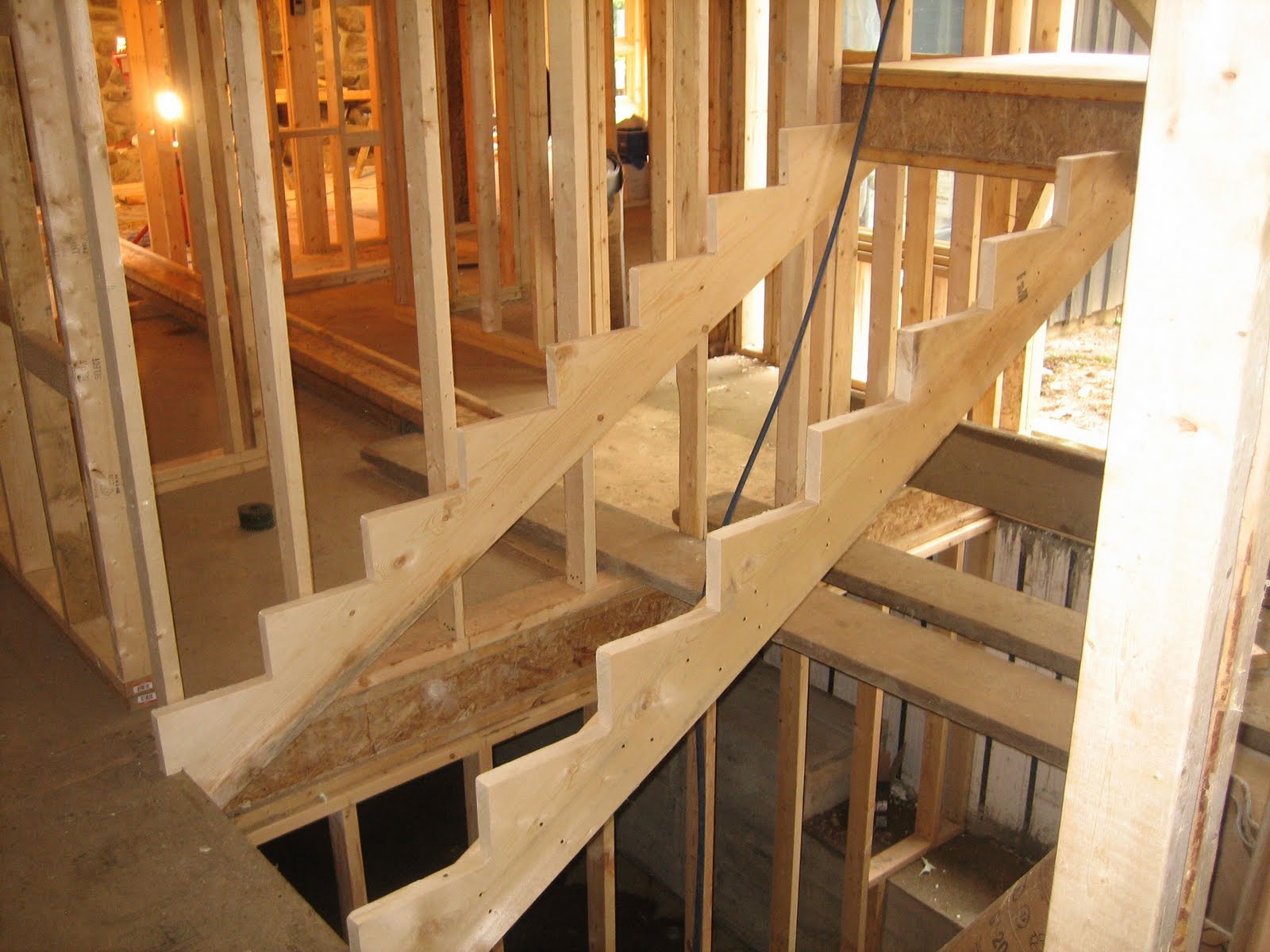Mastering Stringer Attachment to Landings: A Comprehensive Guide
Building a staircase involves more than just placing steps; it's about creating a safe and sturdy structure that can withstand years of use. A critical component of this structure is the connection between the stringers (the sloped supports) and the landing. A poorly executed stringer-to-landing connection can compromise the entire staircase's stability, leading to squeaks, wobbles, and even potential collapse. So, how do you ensure a rock-solid connection? Let's dive into the world of stringer attachment.
Stringers form the backbone of any staircase, providing the necessary support for the treads and risers. The landing, whether it's a platform between flights or the floor at the top or bottom, serves as the anchor point for these stringers. The method you choose for joining these two elements is crucial for overall stability. There isn't one single "best" way – the ideal approach depends on various factors like the type of stringer, the landing construction, and the overall design of the staircase.
Historically, carpenters relied heavily on traditional joinery techniques like mortise and tenon joints for attaching stringers to landings. These methods, while effective, can be time-consuming and require specialized skills. With advancements in construction technology, simpler and faster methods using metal hangers, brackets, and screws have become more prevalent. However, understanding the principles behind a strong connection remains paramount, regardless of the chosen method.
The importance of a proper stringer-to-landing attachment cannot be overstated. It directly impacts the safety and longevity of the staircase. A weak connection can lead to various problems, such as loosening over time due to vibrations, squeaking sounds caused by friction, and even structural failure in extreme cases. Ensuring a robust connection from the outset is critical for avoiding costly repairs and potential hazards down the line.
Several factors can complicate the process of attaching stringers to landings. Uneven landings, variations in stringer dimensions, and complex staircase designs can all present challenges. Proper planning, accurate measurements, and choosing the right fastening method are essential for overcoming these obstacles. Understanding the specifics of your project is the first step toward a successful outcome.
One method involves using metal hangers specifically designed for connecting stringers to landings. These hangers are typically L-shaped and are fastened to both the stringer and the landing framing with screws. Another approach is to create a notched-out section in the stringer that rests directly on the landing framing, securing it with bolts or screws. Alternatively, you can use a combination of brackets and screws for added support, particularly for heavier staircases.
Benefits of Proper Stringer Attachment:
1. Enhanced Safety: A solid connection minimizes the risk of staircase collapse and ensures user safety.
2. Increased Stability: A well-attached stringer reduces wobbling and movement, creating a more secure and comfortable climbing experience.
3. Longevity: A robust connection prevents loosening and damage over time, extending the lifespan of the staircase.
Advantages and Disadvantages of Different Attachment Methods
| Method | Advantages | Disadvantages |
|---|---|---|
| Metal Hangers | Easy to install, readily available | May not be suitable for all load-bearing situations |
| Notched Stringer | Strong connection, aesthetically pleasing | Requires precise cutting and fitting |
| Brackets and Screws | Versatile, can be adapted to various designs | May require more installation time |
Best Practices:
1. Accurate Measurements: Precise measurements are vital for a proper fit.
2. Proper Fasteners: Use appropriate screws or bolts for the specific application.
3. Pre-drilling: Pre-drilling pilot holes prevents wood splitting.
4. Leveling: Ensure the landing and stringers are level before fastening.
5. Building Codes: Adhere to local building codes for safety and compliance.
FAQs:
1. What type of screws should I use? Consult local building codes and consider the type of wood.
2. Can I use glue for added strength? Glue can supplement mechanical fasteners, but shouldn't be the primary method of attachment.
3. How do I deal with an uneven landing? Shimming can be used to level the landing before attaching the stringers.
4. What if my stringer is too short? Consult a professional for advice on extending or replacing the stringer.
5. How can I prevent squeaking? Ensure tight connections and consider using construction adhesive.
6. What are the common mistakes to avoid? Common mistakes include inaccurate measurements, improper fastener selection, and neglecting to level the landing.
7. What tools do I need? Essential tools include a saw, drill, measuring tape, level, and safety glasses.
8. Where can I find more information? Consult with local building inspectors and reputable online resources for detailed guidance.
Tips and Tricks:
Use a clamp to hold the stringer firmly in place while fastening. Consider using a string line to ensure the stringers are aligned correctly. Double-check all measurements before making any cuts.
In conclusion, properly attaching stringers to landings is a crucial step in building a safe and durable staircase. From understanding the historical context to employing modern techniques, the methods outlined above provide a comprehensive overview of achieving a strong and lasting connection. By following best practices, adhering to building codes, and addressing potential challenges, you can ensure the integrity and longevity of your staircase project. Remember, a well-built staircase enhances not only the functionality of your home but also the safety and well-being of those who use it. Invest the time and effort to master this essential skill and enjoy the rewards of a sturdy and reliable staircase for years to come. Don't hesitate to consult with professionals if you encounter complex situations or require additional guidance. Building a safe and functional staircase is an investment worth making.
Mdr tv programm live your gateway to sachsen anhalts finest
Transform your home with gray screen exterior paint
Sopping mess conquer carpet drying like a pro














